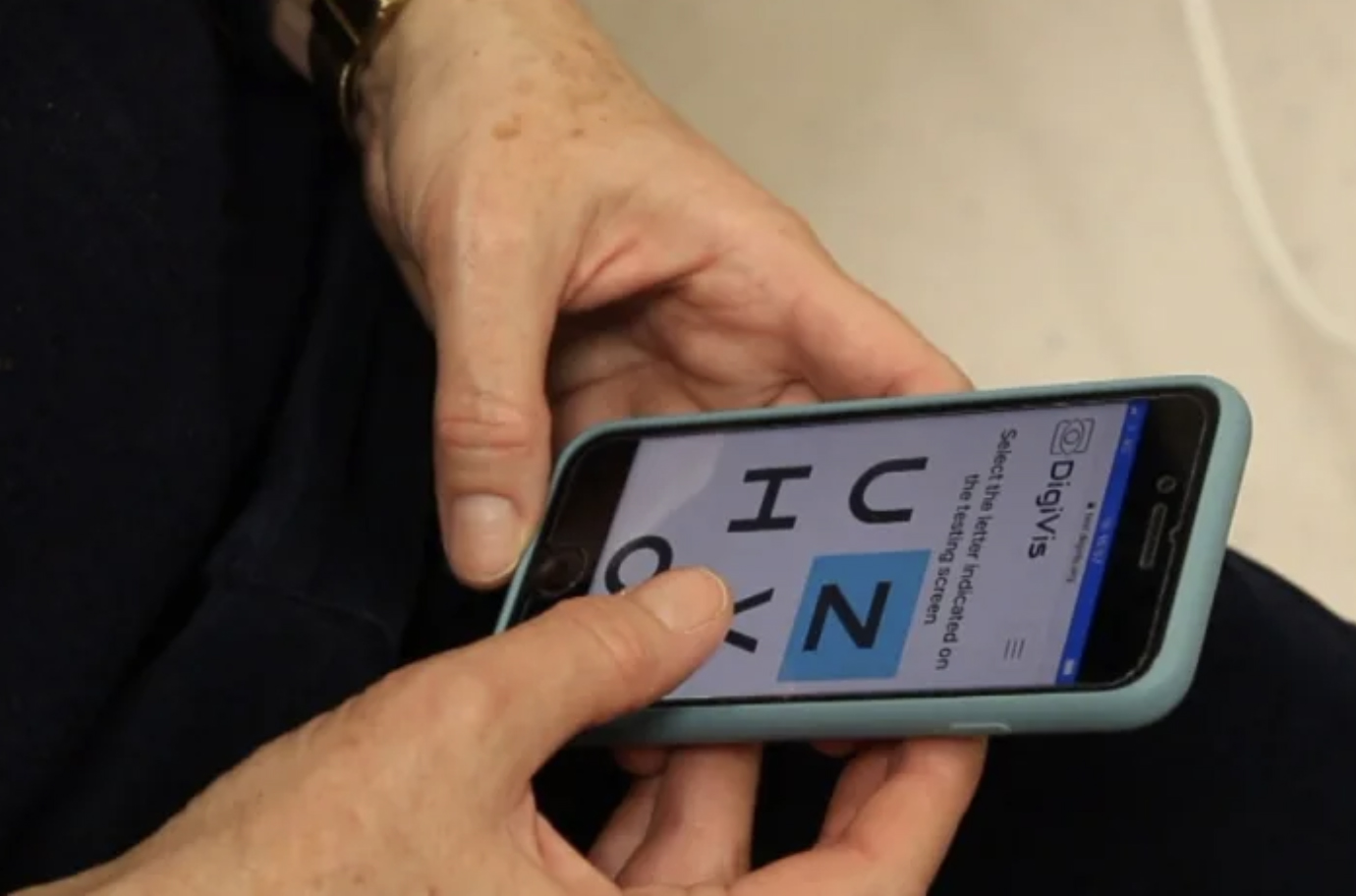 |
| Competition is heating up to develop a remote vision test that adequately balances accuracy with convenience. Photo: Addenbrooke's Hospital |
Eye care practitioners undoubtedly agree that virtual vision tests aren’t as accurate as an in-office exam, nor can these self-administered screenings detect ocular issues or disease as effectively—if at all. Still, telemedicine options for refraction continue to be an area of keen interest, particularly when pandemic restrictions limit ready access to medical offices. A recent one developed in the United Kingdom, called DigiVis (Cambridge Medical Innovation), earned good marks for accuracy and reliability in measuring distance visual acuity (VA), a new study reports.
DigiVis is a web application that facilitates assessment of distance VA using two internet-connected devices without the need for a clinician to administer the test, explains researcher Arun Thirunavukarasu, MD, of the UK-based Department of Ophthalmology, Cambridge University Hospitals NHS Trust, and the School of Clinical Medicine, University of Cambridge.
Dr. Thirunavukarasu and his team required patients to complete the telemed exam before having their vision reassessed in a clinical setting.
“Results indicated that DigiVis is as accurate and reliable as conventional chart-based testing in children and adults, and we hope apps like it can augment remote consultation in ophthalmology and optometry,” he says.
Device Necessity
While some self-administered telemed exams, such as Warby Parker’s updated Virtual Vision Test app, only require a single device, DigiVis requires two, a tablet or laptop which acts as a distant letter display screen and a handheld device such as a smartphone or tablet. An automated algorithm changes the letter size on the distance tablet based on patient input, enabling threshold VA to be calculated and stated in a range of different formats, including Snellen notation, logMAR and cumulative number of letters. Consistent crowding of optotypes potentially gives DigiVis the reliability benefits of the standard ETDRS chart, while its automated staircase and reversal algorithm remove observer bias and may improve precision, the study authors state.
The distance calculation is done by dragging virtual calipers on the screen chart to match the size of a credit card held up against it. Patients can then choose to measure their 2m viewing distance either with a tape measure or by using an automated distance calibration system within the application. This system asks patients to focus the second device’s camera on a graphic presented on the larger device screen, first at 30cm and then approximately at 2m. The application compensates for discrepancy from the 2m point by adjusting optotype sizing to adapt for distance viewing between 1.5m and 2.5m if the patient is unable to manually measure the distance. The test will not start if the viewing distance lies outside the 1.5m to 2.5m range.
Comparable Results
In total, 120 patients aged five to 87 self-tested their vision twice using DigiVis. They then underwent a standard clinical assessment. Eyes with VA worse than +0.80 logMAR were excluded from the study.
The results between the virtual test and the in-office screen were comparable. Specifically, the difference between the two VA results was insignificant at -0.001 logMAR. The upper limit of agreement was 0.173, and the lower limit was -0.175 logMAR. Additionally, the intraclass correlation coefficient was 0.818.
DigiVis test-retest mean bias was similarly minimal at 0.001 logMAR, with the upper limit of agreement at 0.124 and the lower limit at -0.121. The intraclass correlation coefficient was 0.922.
The participants appeared satisfied with the results, as 95% said they would be willing to use DigiVis to monitor their vision at home.
Purported Benefits
Advantages of DigiVis include the automated calculation and calibration of distance between the patient and the screen, which overcome issues of observer distance determination that can affect test results, as well as the use of crowded letter optotypes which enable direct comparison to previous standard clinical testing, the authors note. The forced-choice nature of the DigiVis test and the absence of observer bias are likely to result in improved test reliability relative to clinical assessment, they add.
For those shielding or self-isolating due to COVID- 19, DigiVis VA assessment may allow a clinician and their patient to balance the urgency of an in-person consultation with the risk of hospital attendance, the researchers suggest. As a result of school closures, 700,000 children in the UK have missed school vision screening, the study cites.
DigiVis assessment at home may facilitate catch-up vision screening, although further testing in four- to five-year-old children is needed to confirm this, the investigators note.
Indeed, the option may help clinicians when the patient cannot or prefers not to come into the office, says Brian Chou, OD, of San Diego. Potential viable uses range from triage to monitoring post-LASIK or corneal reshaping patients, he says. The doctor gives the test code to the patient, enabling the results to go to the doctor. “This technology is welcome, since it empowers the doctor,” he says.
However, Dr. Chou notes that DigiVis lags behind what the online retailers offer, explaining that Warby Parker’s Virtual Vision Test does not require calibration, only needs one device instead of two, and is able to accept a verbal response rather than manual input.
Still, he says, “DigiVis shines a path forward for our industry to better serve” doctors and patients. “EHR companies can develop online portals to allow for validated self-administered visual acuities where the results are securely transferred to their doctor for review. If the EHR developers don’t do this, it may be up to the telemedicine and patient communication software developers to bridge the gap.”
Thirunavukarasu AJ, Mullinger D, Rufus-Toye RM. Clinical validation of a novel web-application for remote assessment of distance visual acuity. Eye. Aug. 30, 2021. [Epub ahead of print]. |


